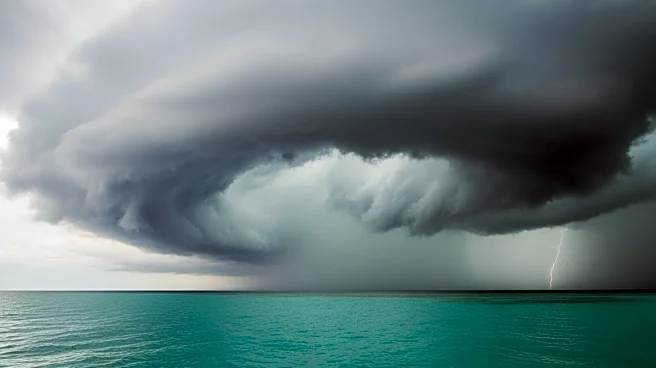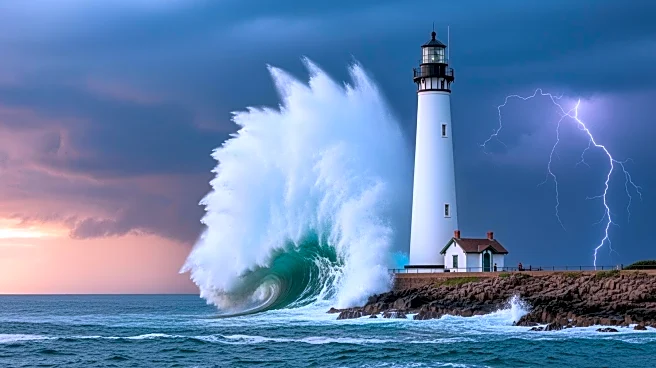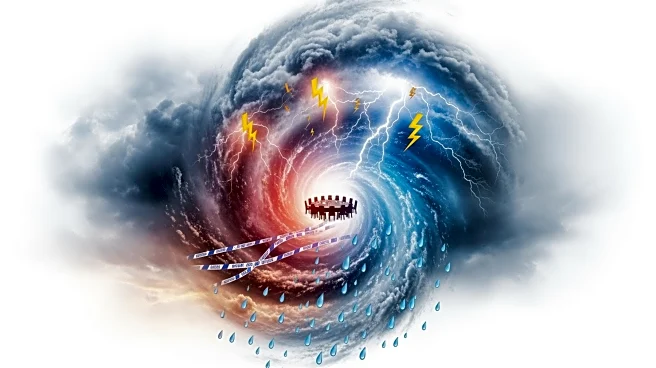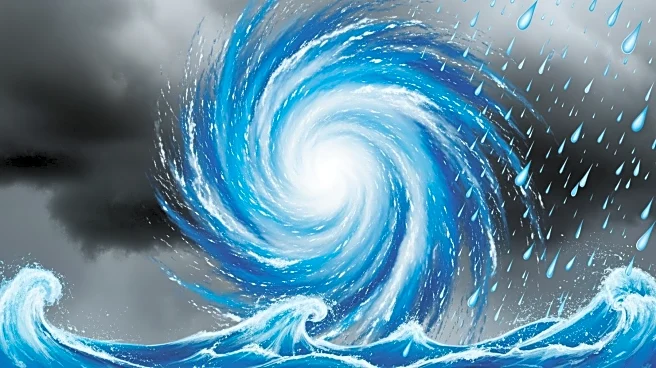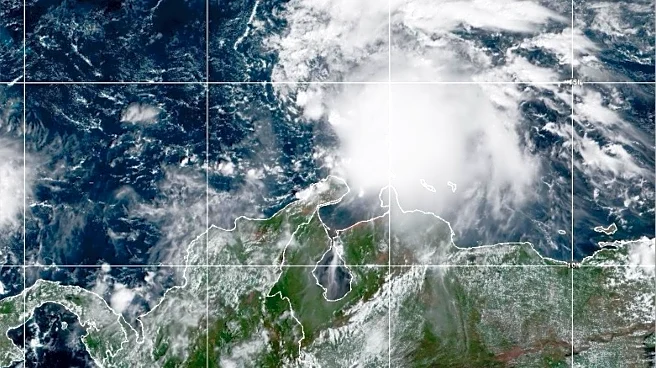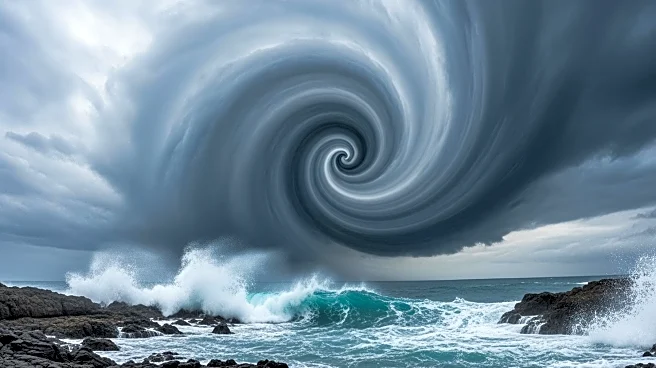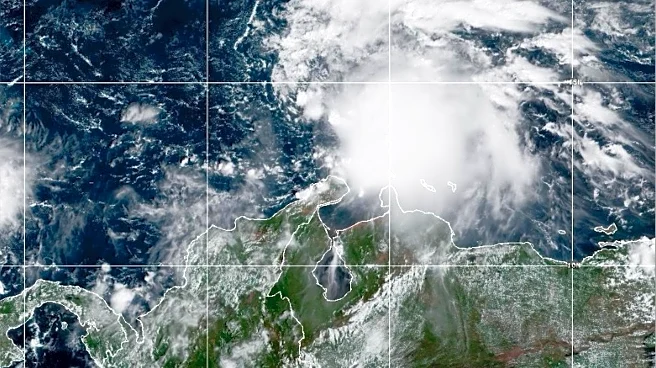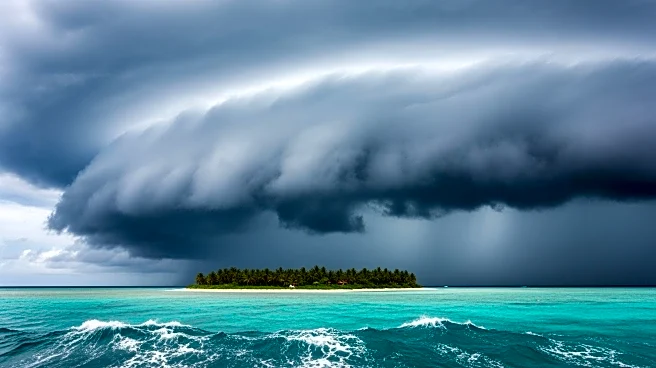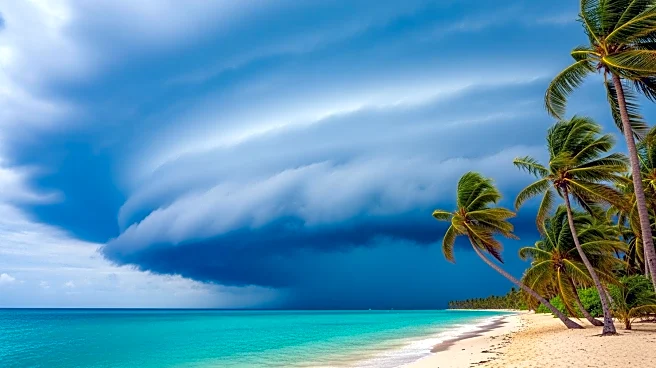What's Happening?
Tropical Storm Melissa, currently located in the central Caribbean, is expected to strengthen into a dangerous hurricane. As of Wednesday, the storm is moving slowly west-northwestward with sustained winds
of 50 mph. High wind shear is affecting the storm's development, but it is traversing near-record warm waters, which could fuel its growth. The storm poses a threat of disastrous flooding and mudslides in Haiti, the Dominican Republic, eastern Cuba, and Jamaica. The National Hurricane Center predicts Melissa could become a major hurricane early next week.
Why It's Important?
Melissa's potential to become a major hurricane raises concerns for the Caribbean, a region vulnerable to severe weather events. The storm's impact could lead to significant humanitarian and economic challenges, particularly in Haiti and the Dominican Republic, where infrastructure is often compromised by heavy rains. The warm waters fueling Melissa's growth are indicative of climate change effects, highlighting the need for enhanced disaster preparedness and climate resilience strategies. Monitoring Melissa's progression is crucial for timely warnings and protective measures in affected areas.
What's Next?
The storm's track remains uncertain, with possibilities of affecting Jamaica, the Cayman Islands, and Cuba. If Melissa strengthens quickly, it could be influenced by a trough of low pressure, altering its path. The National Hurricane Center continues to monitor the storm's development, with predictions of rapid intensification. Stakeholders in the Caribbean are advised to remain vigilant and prepare for potential impacts, including evacuation plans and resource allocation for disaster response.


